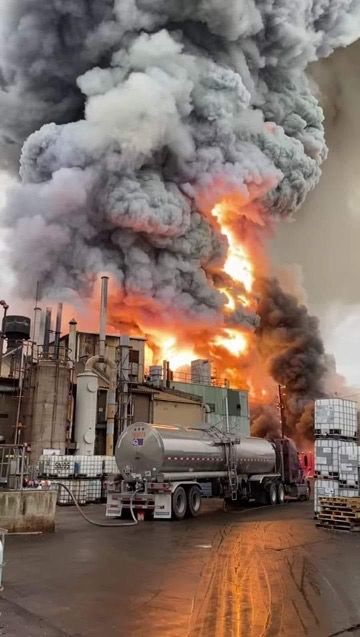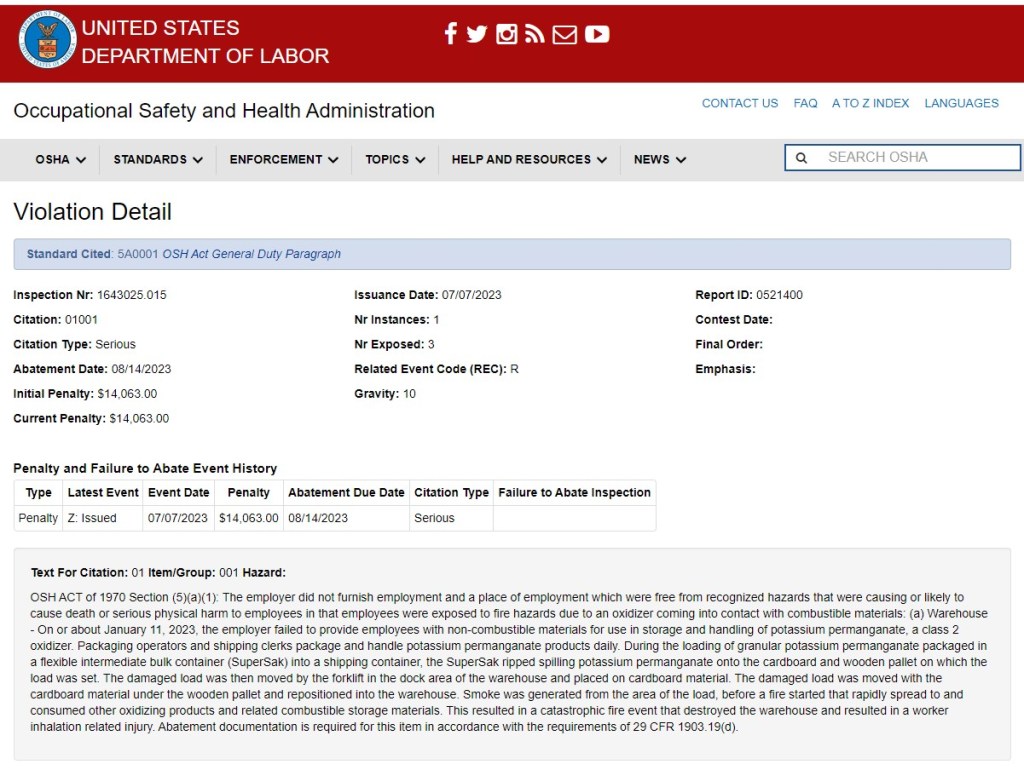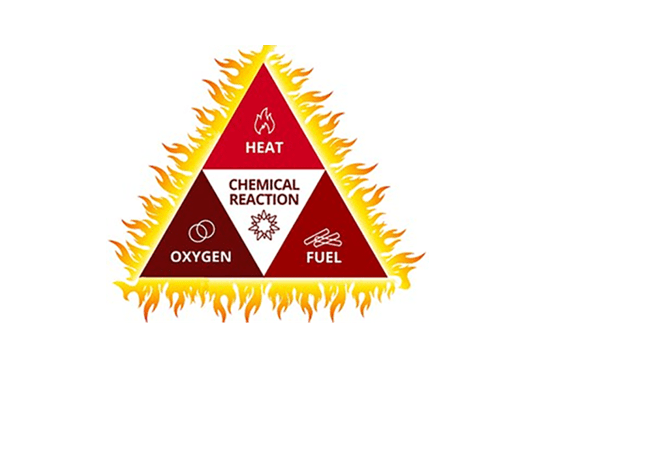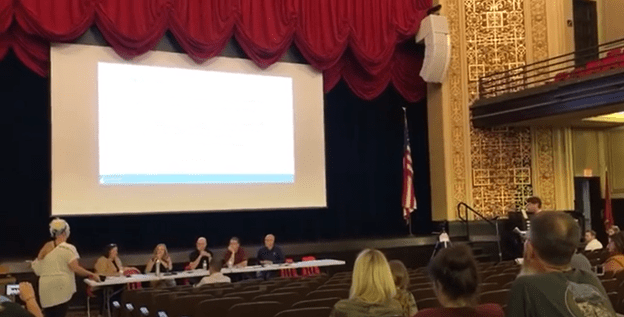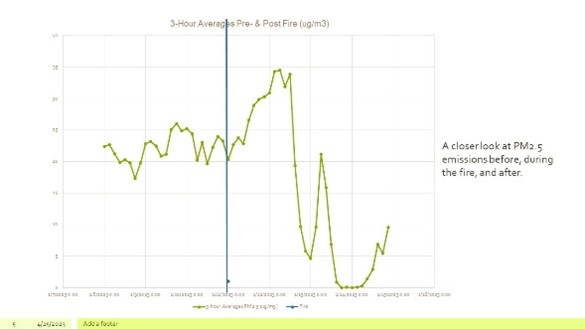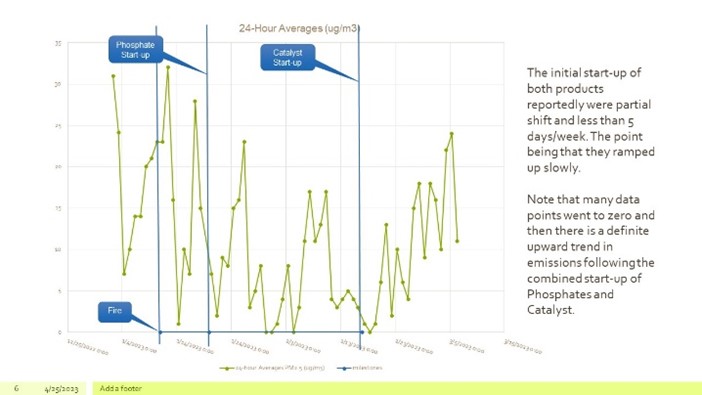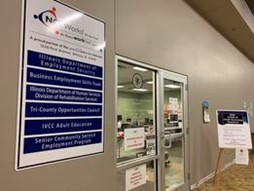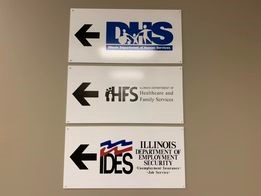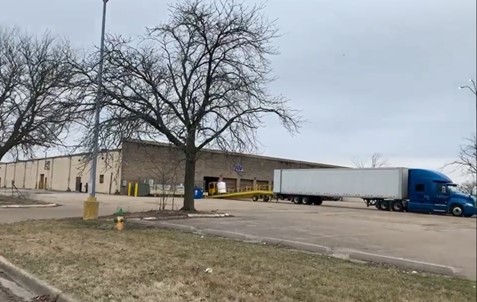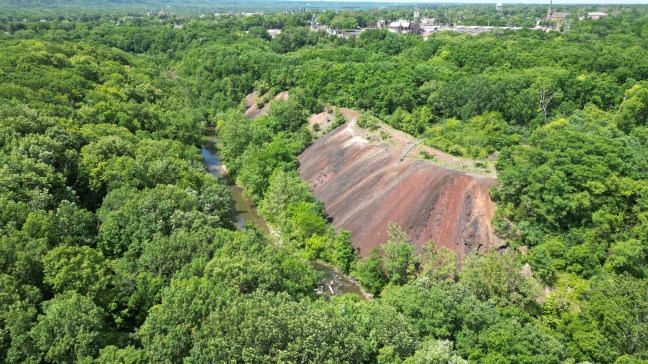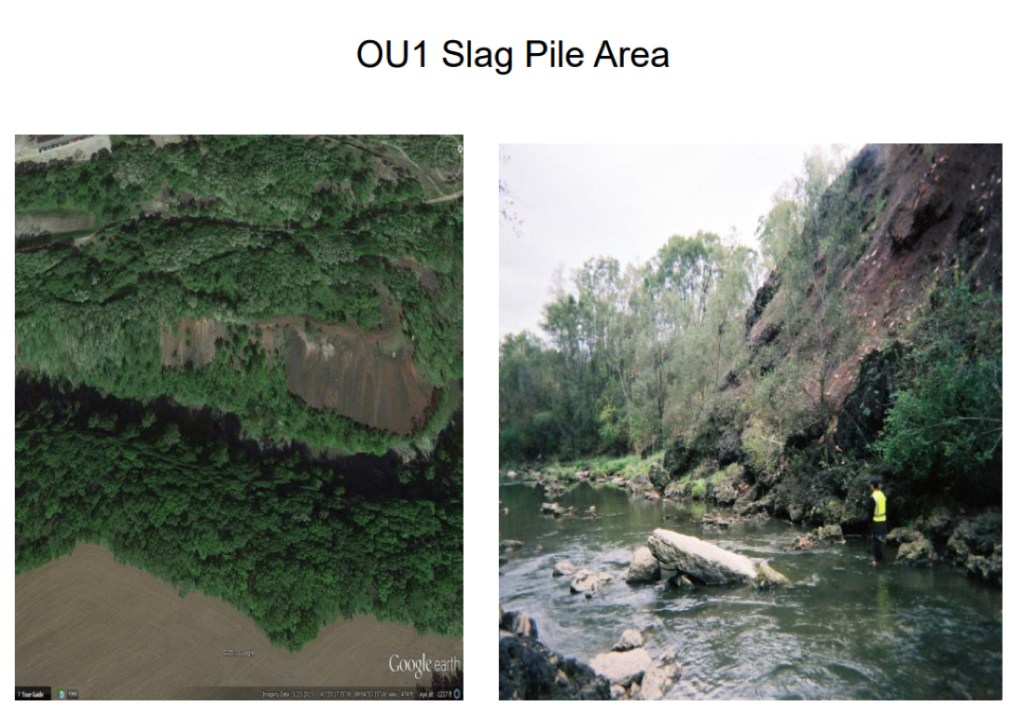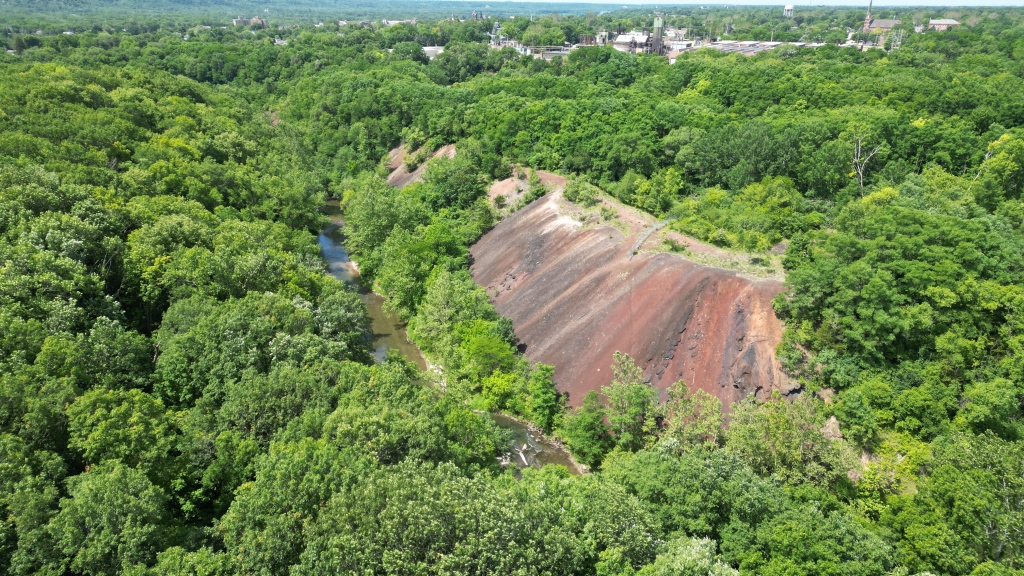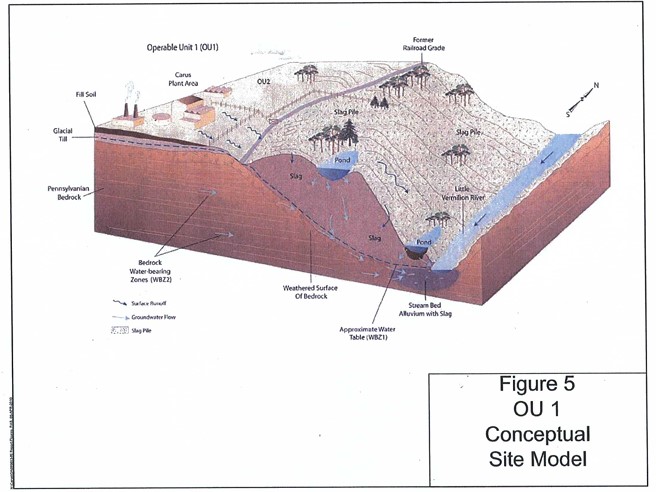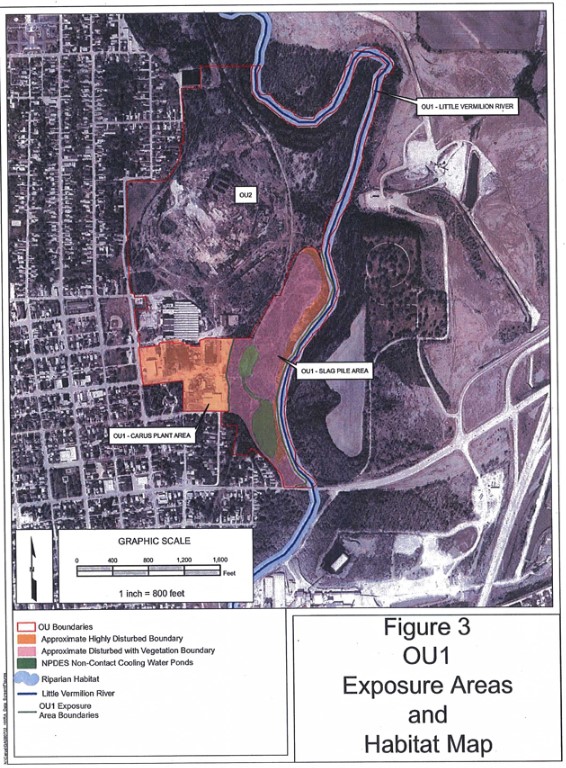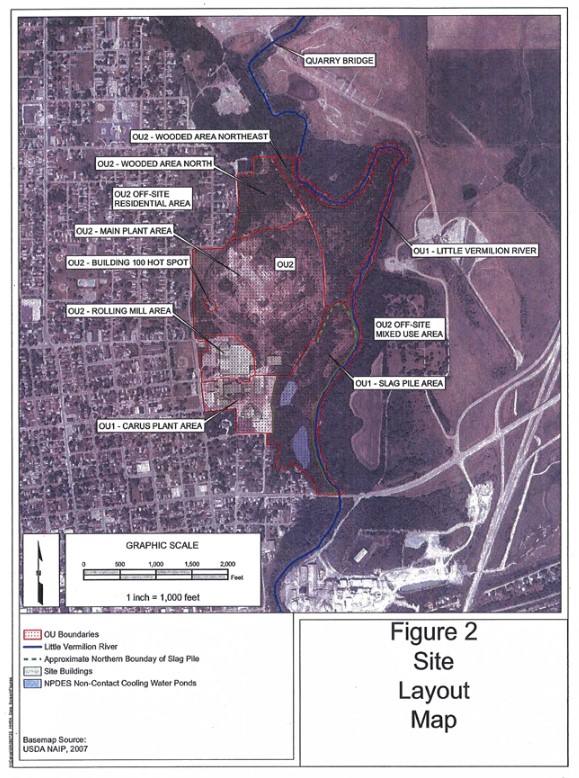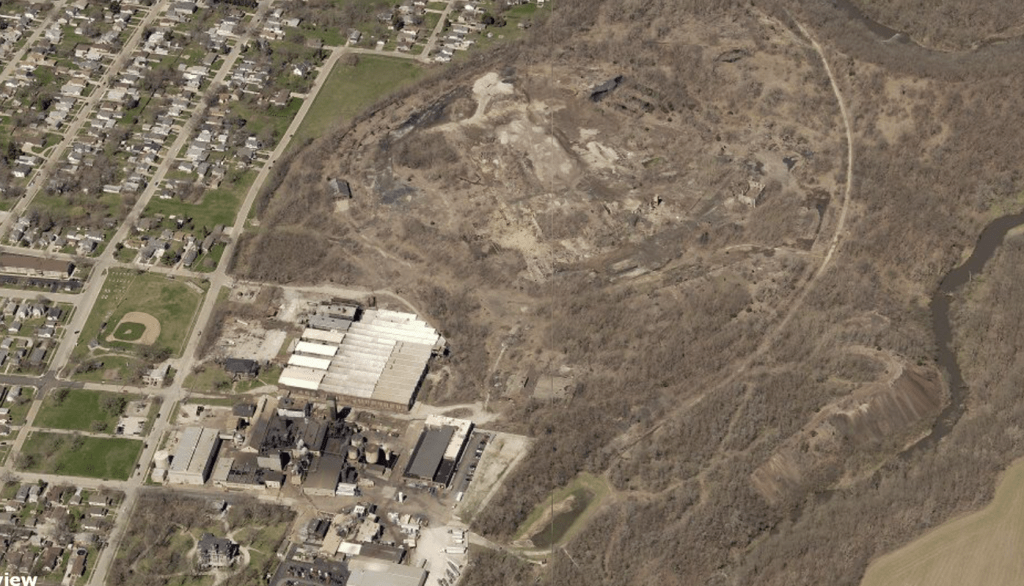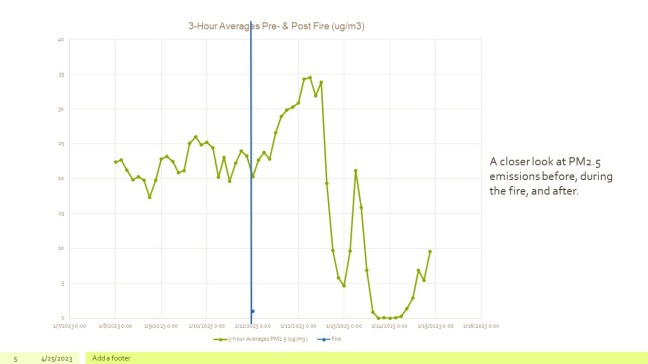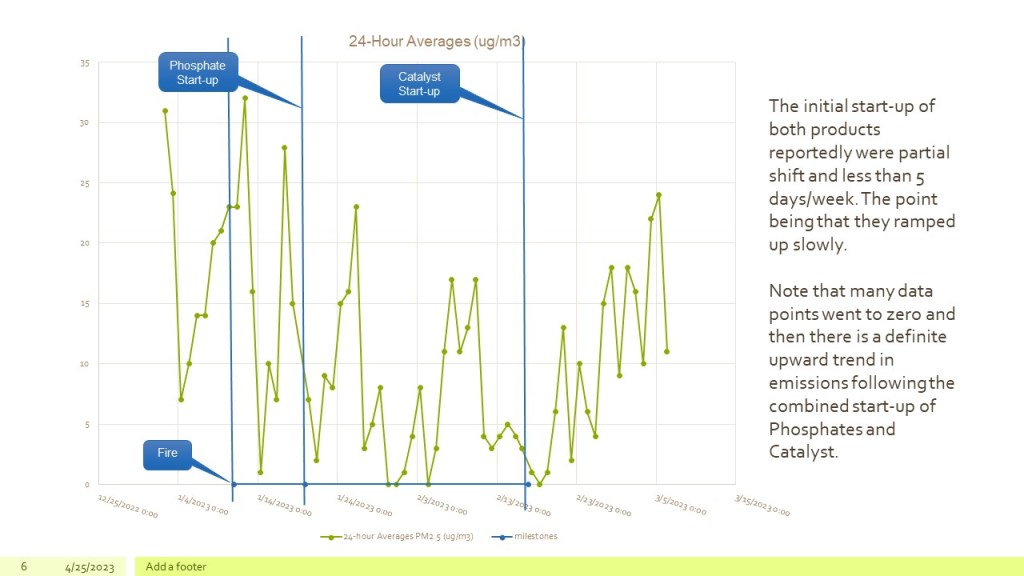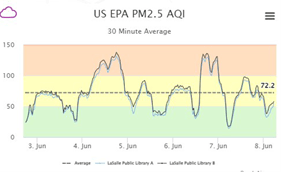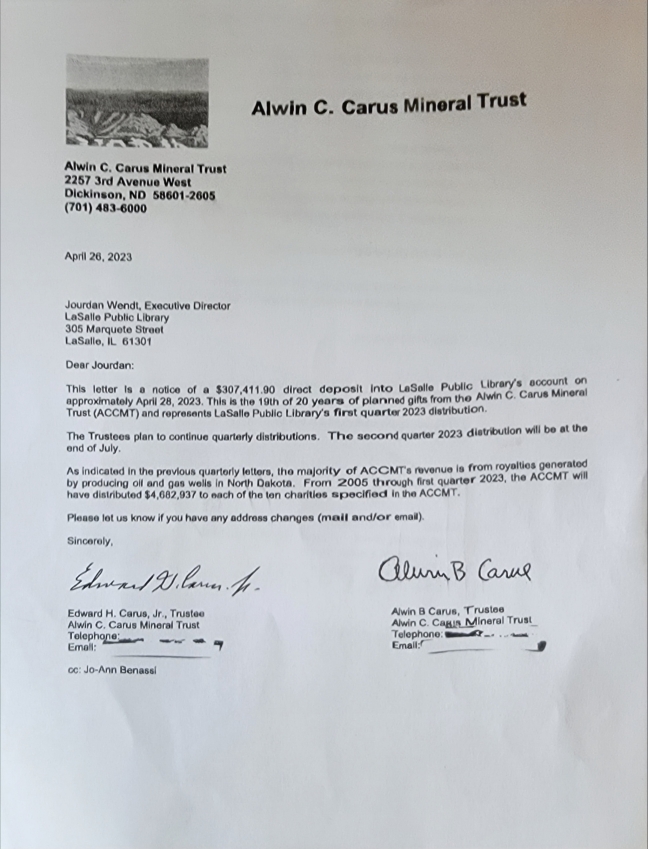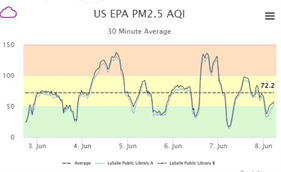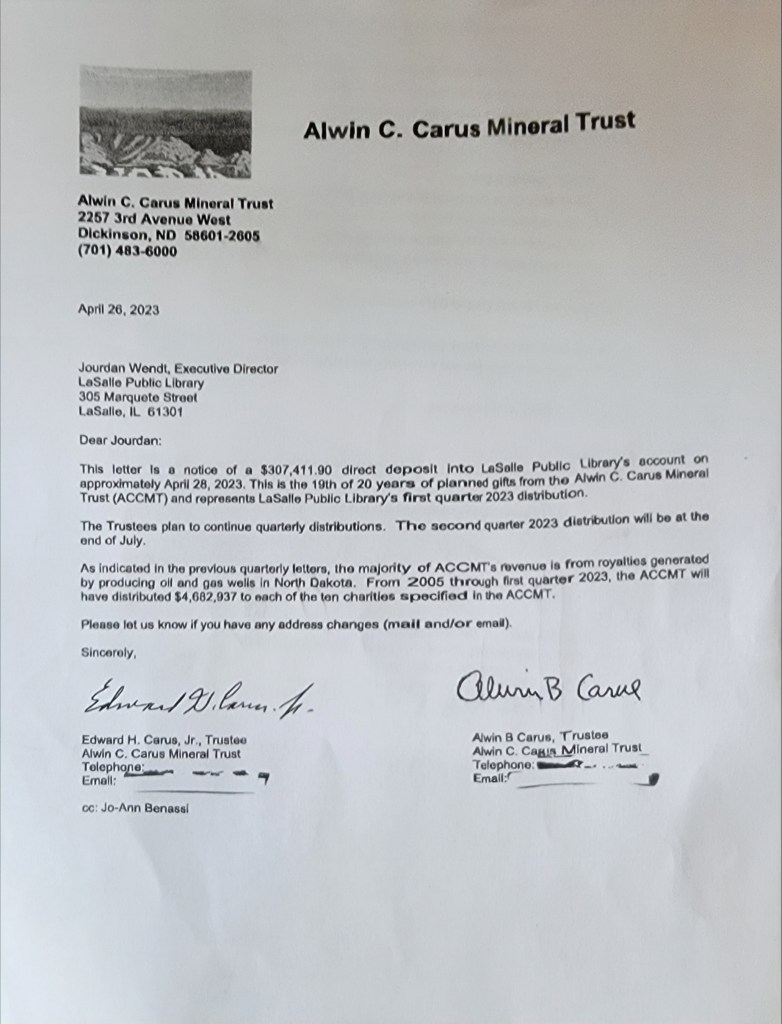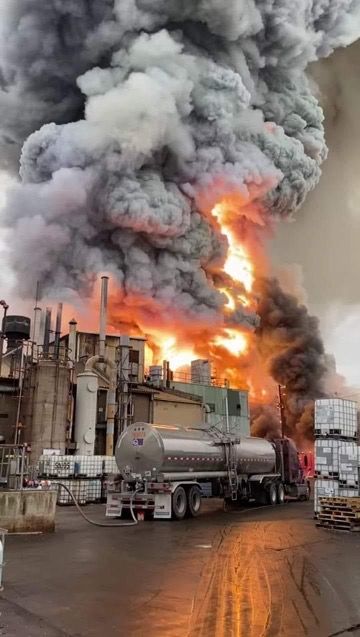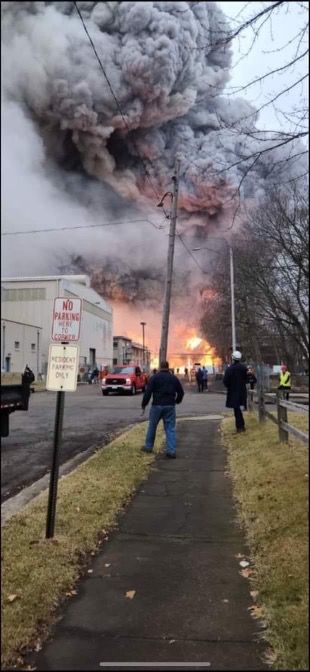To Whom It May Concern:
As a resident of La Salle, IL and as a homeowner affected by the fallout from the Carus Chemical LLC. Fire that occurred on January 11, 2023, I have several concerns that lead me to contact you today. Please understand that I have been working through the process, as are the other residents, and feel that as of writing this there are some concerns that I feel have not been addressed properly and I would like to see them looked into.
Allow me to return to my experience starting from the day of the fire through today as I feel that is the only way to fully paint the picture. The day of the fire my wife was at work in Ottawa, IL and I had dropped both of my children off at school. I myself left early to go to a doctors appointment in Oglesby, IL that morning. I was in my appointment when I received several urgent messages from friends concerning the fire. Despite being on the list for the city of La Salle’s contact hotline to allow community members to know of any important information, I was not notified and, therefore, unaware of what had occurred. Once leaving the office I was able to visibly see the large, black clouds to the North where the fire was happening.
Upon rushing home I found several streets surrounding the Carus Chemical LLC building starting to be closed down between Route 6 and my home,. I was able to get to my home (two blocks North of the plant) to find no obvious particles (again no information was relayed as to what to look for) barring a “freckled” appearance to my porch railing.
The smell outside can only be described as an open car battery running through a car wash, a strange combination of chemical and corrosion. Finding no obvious large material such as building material (steel, wood, etc.) I decided that I still needed to run my errands. I had wrongfully assumed that if there were any health concerns I would have been notified. I made my way to my children’s school as I was contacted by my son that they were potentially sending children home. The school informed me at that time they were in fact not intending to do so. I continued my errands as normal, noticing that the strange smell was still in the air in Peru, IL at the Target store.
Once finished, I returned home. By this time a friend of mine had posted on Facebook that Carus was telling people to clean the black/green material that was dotting my porch and everything outside my home with a combination of vinegar, water, and hydrogen peroxide mixed in equal parts. This would “inactivate” any chemicals that may remain active. As I was outside spraying down my porch I was notified by my wife that the school said they are keeping kids in until 3:00pm rather than the usual 2:00pm time they usually would be released. I continued to clean my porch, now using my pressure washer to spray off the remaining particles as a van from NBC pulled up asking for an interview. I declined as I had to get everything cleaned prior to picking up my children so they wouldn’t come in contact with the material on my porch.
Later that evening the news of the event came out from a press conference. There was a shelter in place order that was now (as of the evening news) lifted… something I had yet to hear about. The first call from the city coming at 7:58pm. We were informed that the IEPA and USEPA were monitoring the air quality as per standard protocol. The news that they had ended the air monitoring came January 13th.
Now, my first concern regarding this event is the lack of information from the city of La Salle. We have discussed this with them at city meetings, meetings that Carus to this day refuses to attend despite several requests from both the city and the residents. The emergency contact did not go out to many residents. That, as we have been informed, is now currently remedied. My second concern is that at no point was there an IEPA or USEPA person in my neighborhood to inform residents of any potentially dangerous chemical in the air.
Air quality results from the USEPA show that they have a 24-hour average standard that the main particulate matter concern (PM 2.5) should come to a total below 35.5 ug/m3. I looked at all of the published information from the USEPA and found several discrepancies in their numbers. First, the numbers are in mg/m3, a number that needs to be multiplied by 1000 to convert to the correct ug/m3 standard. Secondly, the air monitoring numbers for A-2 and A-3 (my home is between those two monitoring sites) show exactly two measurements, one taken the day of the fire (January 11, 2023) at 4:48pm (A-2) and the other at 6:32pm (A-2) that same day. As for the A-3 site the same, one taken at 4:59pm and the second at 6:47pm, both on January 11, 2023. No further testing is listed for either monitoring location (or any of the four locations north of the fire, the direction the wind was blowing that day). The numbers indicate levels at or above the indicated standard as the A-2 location was 35ug/m3 at 4:48pm and 52ug/m3 at 6:32pm. The A-3 location was 35ug/m3 at 4:59pm and 58ug/m3 at 6:47pm. Both numbers went up during the monitoring, both going from the Moderate/Unhealthy to Sensitive Groups range up to the Unhealthy [for all] range. There is no indication anywhere for these numbers past that point. Again, the standard [according to the USEPA website] is a 24-hour monitoring AVERAGE.
To further the concern, the last result listed for any of the monitors in any direction is on January 12, 2023 at 6:03am (SR-02). This would mean that the 24 hour standard was missed on the minimum number of hours by 10 hours and 20 minutes, using the data of the first collected sample taken at 4:23pm on January 11, 2023 (A-01). Did I mention that at the time of the last sample (SR-02 at 6:03am, January 12, 2023), if converted correctly was at 40ug/m3? That’s still listed at the level of Unhealthy for Sensitive Groups. My next concern is that the soil samples taken that day were taken from the Carus Chemical LLC site. We, as residents did have some sampling taken from Brownsfield via the City of La Salle, though there has been questions as to the validity of the samples taken. Similarly the wipe samples taken by the IEPA on January 12, 2023 were, in the laboratory report listed as (X301-X306) not a quantitatively valid unit [as reported].
Furthermore many samples “failed to meet the quality control criteria.” This also raises a red flag as the IEPA and USEPA are involved in our area as part of an ongoing superfund site. Most of the affected homes have already had their yards remediated (us as residents question the job done during the remediation as we now have drainage issues we didn’t have prior) and now are faced with the unfortunate question: what is now in our soil?
The original testing was based upon what the Carus representatives said went up in the explosion, nearly one million pounds of potassium permanganate. Under the assumption that Carus was truthful about what was in the fire, agencies only tested for potassium and manganese. What was missed was the potential for many other hazardous metals and chemicals that may also have been involved, many of which are health hazards. I am concerned that the standard should not be on what the company at fault contests is the risk rather than what are all of the potential risks?
We as citizens are becoming aware of the many potentially dangerous substances that are housed at their factory (or in the case of the Apollo warehouse, in our back yards without any local officials being aware of their existence). We also question why the EPA is still doing much more extensive testing at the site of the fire and plant while declining any further testing for the residents. We were exposed to the same chemicals and do not understand the logic.
Currently we as a community have been in contact with the Sierra Club in regards to what we may be able to do about the above concerns and many others that are being raised. Several of our homes had furnace filters tested that revealed levels of several of the aforementioned hazardous metals including Barium, Copper, Lead, Manganese, Zinc, and in a few cases Mercury. The USEPA, IEPA, and IDPH have all raised several questions as to the validity of the furnace filters and the chain of command.
Please let me be very clear, my filter was one of the filters tested with all but Mercury in it. My filter was 2 weeks old as of the explosion, having been changed at the beginning of the new year. The filter was removed by me and taken directly to my neighbor who was in contact with the Sierra Club and followed the proper handling as per their recommendations.
As to the validity of the indoor air quality, nobody in my home smokes, there is no fireplace, we have not painted anything in our home for several months, our furniture is several years old, we don’t use cleaners regularly and minimally when we do, and rarely, if ever, use candles and/or air fresheners. The sampled filter should have no reason to be contaminated given the idea that these metals (many of which don’t normally exist naturally in the environment) go down and do not “float” upwards according to information shared with us. My furnace is in my attic, not my basement. They would have to defy gravity to get there.
We are looking into what options we have as residents to make sure that the air we breathe is not toxic or harmful with long-term exposure for not only ourselves, but our children. The continued concern is that several residents that initially tested filters have had a second filter tested with results continuing to show all of the above toxic metals, some of which have even increased.
We worry that Carus Chemical LLC is continuing to pollute the air for our community and its citizens.
Other concerns we have encountered within this process is the ever moving target for property damage reimbursement via insurance claims. Originally, when the Carus hotline was opened up (and the third phone number we were given finally was a valid number) we were told to go through our homeowners insurance company and to give them a form from the Carus Chemical LLC website. Carus would use the Davies Company to work with our insurance after all claims are finalized to settle with the insurance company that had paid for our repairs. As such, I have been working with my insurance.
However, Carus is now sending “adjusters” to our area that will not verify the agency they work for, nor give us information regarding the insurance company being used by Carus. The company has also denied the information to the city of La Salle. The people that are coming out are handing residents paperwork with a check (covering a small portion of damages, including in one case I heard a car wash reimbursement). The paperwork includes the title of the resident’s name Vs Carus. This is a legally binding agreement in which the person signs away any right to further payments for property or health reimbursement.
This is not only deceptive, but fraud as the residents are led to believe it is to take care of a current claim and not to take care of the entirety of the claim. And if Carus had previously said they were only taking care of things not covered by our homeowners insurance, how can they be making offers of settlement when our homeowners claims have not been fully processed?
Something is not right here. We have concerns regarding local news sources removing or revising content to the extent of painting Carus in a more positive light. This pertains to multiple online articles and radio broadcasts that later were missing from the on-demand content. We have concerns that the city officials were made aware that the Apollo warehouse was vacant except for old machine parts, only to find out that it took fifteen semi loads, all without the proper hazardous labeling (our city and state police were made aware) to remove chemicals being stored there.
The warehouse is, come to find out, listed as a tier two chemical facility. It had a hole in the roof, boarded up windows, no security or security cameras, and no water sprinkler system. Furthermore the only alarm up until recently went directly to Carus, not to a local switchboard for emergency personnel. We have concerns that Carus continues to stonewall our local officials for any further testing or reimbursement for any testing that has already been done due to being cleared by both the IEPA and USEPA, even after the testing results being highly suspicious, even when posted on their own website and not meeting the standards set by their agencies. Carus continues to dodge all public forums and refuses to call residents back regarding any concerns they may have.
At no point during this process have I, or any resident I have spoken to, felt as if the governing bodies that we should believe are for the people have met a fraction of the expectations we should receive at a minimum. It feels as if our tax dollars are hard at work to keep us from getting answers and peace of mind. We ask for further, and proper, testing to make sure the health of the citizens of La Salle, IL are not being put at risk as a byproduct of this corporation’s operation so the rest of the world can have clean drinking water. We do not wish for our families to suffer significant health risks due to insufficient testing from what has already occurred and lack of further oversight of emissions by Carus Chemical LLC in the future.
It is a bit alarming to step back and realize that Carus Chemical LLC is responsible for a vast majority of the filtration for drinking water worldwide, giving them unimaginable influence and power politically. We recognize that Inga Carus has been on a number of trips with governors and elected officials representing plans for economic growth, potentially creating a vast interest in the company’s profitability and expansion. With this in mind, it is difficult to think anything other than the lack of concern and further testing by IEPA, US EPA and IDPH on behalf of the residents smells of political influence in play here.
Josh Busche
La Salle, IL resident, affected by the January 11, 2023 Carus Chemical LLC fire
